This is the second post in a series about my recent trip to Italy.
I can’t believe I overslept. It’s hard enough to arrange private farm visits from across an ocean (Italians and Americans have a very different idea of scheduling), so when my travel buddy / fellow pizza enthusiast Jason shook me awake just fifty-four minutes before our train was scheduled to depart I felt like my carefully orchestrated plan to visit a buffalo farm was destined to crumble. With only two trains from Naples to Capua and a five hour interval in between, failure was not an option. All thanks to Jason and none to my Radio Shack travel alarm clock, we rushed to the station only to find that the train was delayed 25 minutes. Crisis averted, we made it to Capua and met our guide for the day, Luigi Stabile, whose family has been in the buffalo biz for over two hundred years.

The Asian water buffalo, not to be confused with the North American buffalo.
Luigi’s father Nunzio started A.B.C. (Coop Allevatori Bufalini Casertani) in 1978, along with Onofrio Piccirillo and Salvatore Caterino, just as the buffalo mozzarella market was beginning to expand around the globe. They immediately started exporting buffalo mozzarella to the United States, becoming the first company to do so. Most Americans are familiar with mozzarella as a cow’s milk cheese, but the word mozzarella traditionally refers to that which is made of buffalo milk. The term fior di latte is used for mozzarella made from cows’ milk.
Luigi told us that buffalo have been in Italy for nearly 700 years and their milk was being used to make fresh cheeses before cows were even on the scene. Thinking back, I did not see a single cow during my stay in Southern Italy. That’s probably because buffalo are more suited to the climate of the region. Unfortunately, buffalo produce only a quarter as much milk as a cow, which makes this cheese more expensive.
Our adventure in buffalo land began with a tour of one of the 15 farms that provide milk for A.B.C. We saw everything from the grazing fields to the baby buffalo birthing area to the milking room to the storage and delivery area.
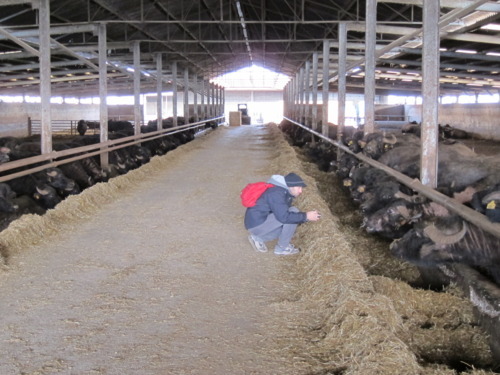

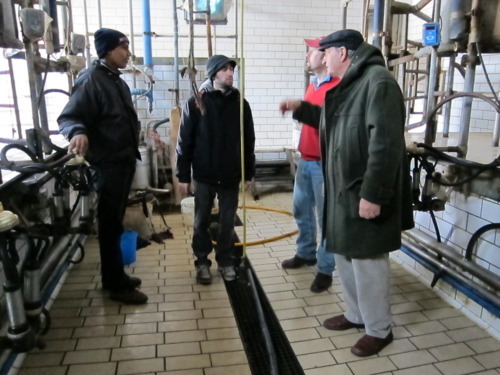
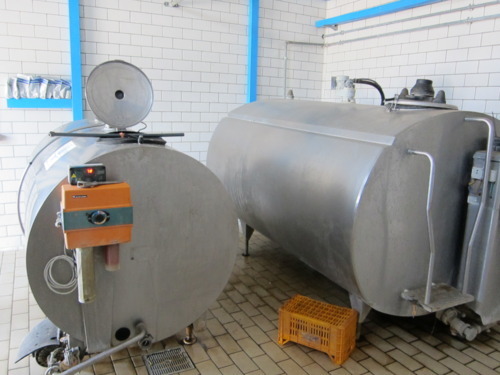
Top row: All the ladies want to be in Jason’s photo; baby buffalo daycare
Bottom Row: Jason absorbs information in the milking room; small storage tank for lower Winter yield, larger tank for Summer yield.
After spending some time on the farm, we headed to A.B.C. headquarters for a look at the production facility. The day’s milk had already been processed, so we were privy to a full view of the facility without getting in anybody’s way. After being pumped through a filter, all the milk gets pasteurized and heads into the central production area. The overall process is as simple as heating and curdling the milk, melting the curds, stretching until protein bonds develop, and finally shaping and cooling. You can do it on a small scale at home, but these guys and gals are producing tons of it every day. Home cheese makers usually introduce an acid (lemon juice or vinegar) to help curdle the milk quickly, but A.B.C. lets the process happen naturally with the use of a byproduct of the previous day’s production, known as serum.


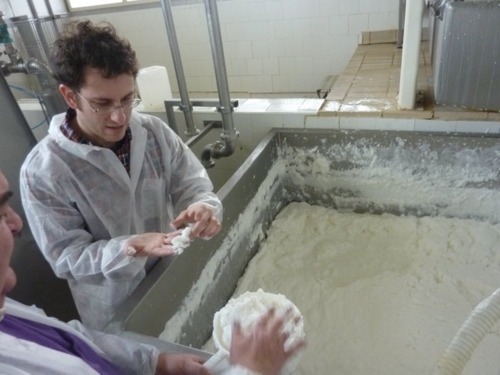

Top row: Pasteurization gear; Jason learns the ropes
Bottom row: Sneaking a quick snack; A.B.C.’s sweet batch of serum
After a full overview of the process, it was time to chow down on some fresh mozzarella, ricotta, and butter – all made on site from fresh local buffalo milk. We learned about the difference in texture and moisture content between the different sizes and shapes of mozzarella; the smaller the piece of mozzarella, the lower the moisture content. All you need is a nice loaf of bread, some cured meats and a bottle of local wine and you’re good to go!

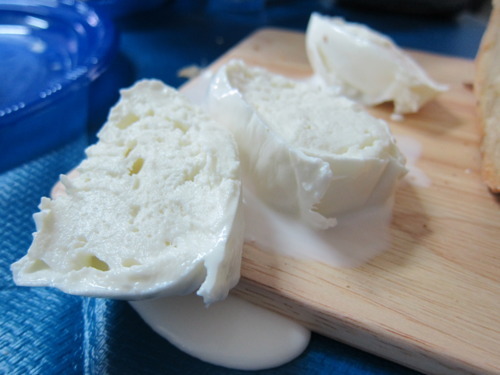

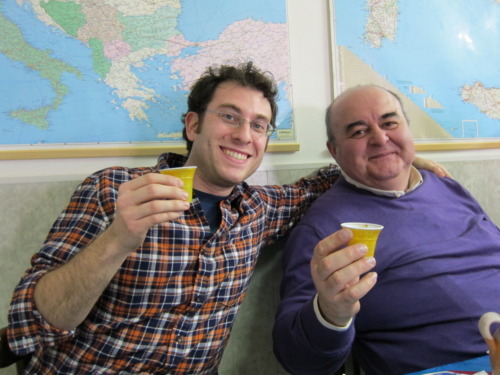
Top row: Fresh ricotta; mozzarella
Bottom row: Jason documents bocconcini; enjoying an espresso with my new pal, A.B.C.’s director Maurizio Spataro.
That was some delicious cheese indeed and I cannot overstate the degree of freshness we encountered. But most of us will be purchasing our mozzarella di bufala at groceries and markets in the US several days after it is produced in Caserta. There are some subtle differences between the product purchased in Italy and the product exported to the US. First of all, mozzarella gets shipped to the US packed in plastic bags that are filled with the brine in which it is produced. The cheese is then sold by the bag rather than being sold by weight as it is in Italy. This is why export mozzarella is shaped uniformly by forming rolls whereas cheese made for domestic sale is largely produced by hand. It’s just too difficult to be consistent while forming mozzarella by hand, so A.B.C. prevents angry phone calls from distributors by creating a uniform product.
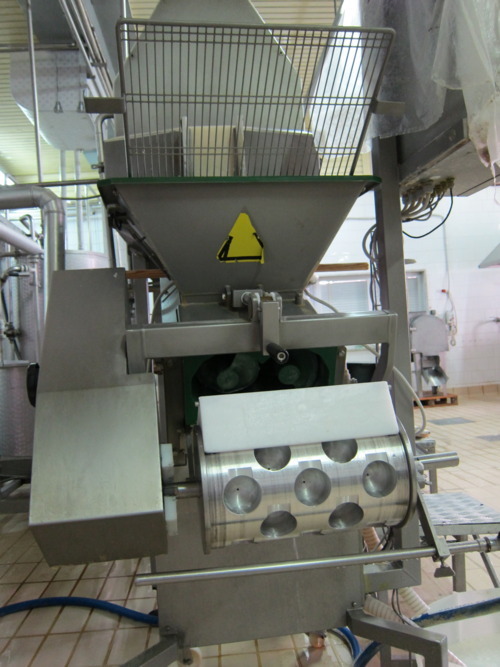
The forming rolls pull the cheese tighter, which helps maintain interior moisture levels and fortifies the cheese in shipping. Luigi also explained that shelf life is extended to nearly 30 days because export mozzarella contains less salt than domestic batches. According to A.B.C., a higher salt component would damage shipping bag and promote spoilage. That’s probably not the best idea for a product that takes 4-10 days alone just to reach US shores.
A.B.C. is based in Caserta, one of Italy’s two mozzarella di bufala producing regions. You can read about mozzarella from the area south of Naples in my post about two companies I visited in Paestum in 2009.

